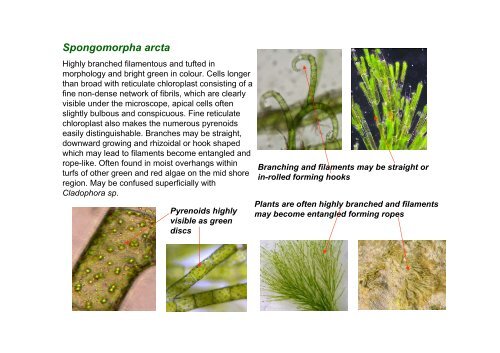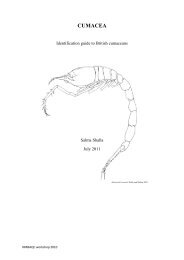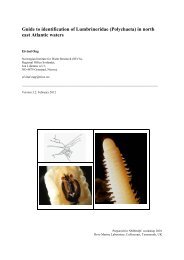s A Field Guide to the British Seaweeds - NMBAQC
s A Field Guide to the British Seaweeds - NMBAQC
s A Field Guide to the British Seaweeds - NMBAQC
Create successful ePaper yourself
Turn your PDF publications into a flip-book with our unique Google optimized e-Paper software.
Spongomorpha arcta<br />
Highly branched filamen<strong>to</strong>us and tufted in<br />
morphology and bright green in colour. Cells longer<br />
than broad with reticulate chloroplast consisting of a<br />
fine non-dense network of fibrils, which are clearly<br />
visible under <strong>the</strong> microscope, apical cells often<br />
slightly bulbous and conspicuous. Fine reticulate<br />
chloroplast also makes <strong>the</strong> numerous pyrenoids<br />
easily distinguishable. Branches may be straight,<br />
downward growing and rhizoidal or hook shaped<br />
which may lead <strong>to</strong> filaments become entangled and<br />
rope-like. Often found in moist overhangs within<br />
turfs of o<strong>the</strong>r green and red algae on <strong>the</strong> mid shore<br />
region. May be confused superficially with<br />
Cladophora sp.<br />
Pyrenoids highly<br />
visible as green<br />
discs<br />
Branching and filaments may be straight or<br />
in-rolled forming hooks<br />
Plants are often highly branched and filaments<br />
may become entangled forming ropes




